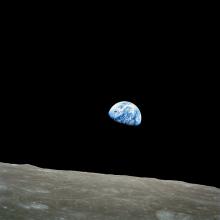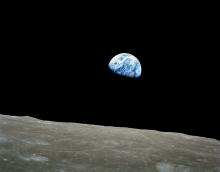Listen to today's episode of StarDate on the web the same day it airs in high-quality streaming audio without any extra ads or announcements. Choose a $8 one-month pass, or listen every day for a year for just $30.
You are here
Round Earth
Flat Earthers aside, everyone knows that our planet Earth is round. But what many don’t realize is that we’ve known this for thousands of years — long before the voyages of Christopher Columbus.
The key clue came from the Moon. Every now and then, the Moon passes through Earth’s shadow, producing a lunar eclipse. The shadow is round — a clear indication that Earth itself is, too. Greek philosopher Aristotle made that argument more than 2300 years ago.
Our planet owes that round shape to gravity. It squeezes the planet into a near-perfect sphere. In fact, Earth’s diameter through its equator is only 27 miles greater than through the poles — a difference of just a third of a percent. That difference arises because Earth spins, producing an outward force that creates that tiny bulge around the equator.
Gravity also squeezes the other planets into round shapes. The two least-round planets are the ones that spin the fastest: Jupiter and Saturn. Even though they’re many times larger than Earth, they complete one turn in just 10 or 11 hours. That high-speed rotation puffs up their equators. As a result, both planets are thousands of miles thicker through their equators than their poles, so they look like squashed beachballs.
The largest body in the solar system — the Sun — is also round. It spins slowly, though, so there’s little to distort the shape dictated by gravity — the same force that squeezes Earth and the Moon into spheres.
Script by Ken Croswell





